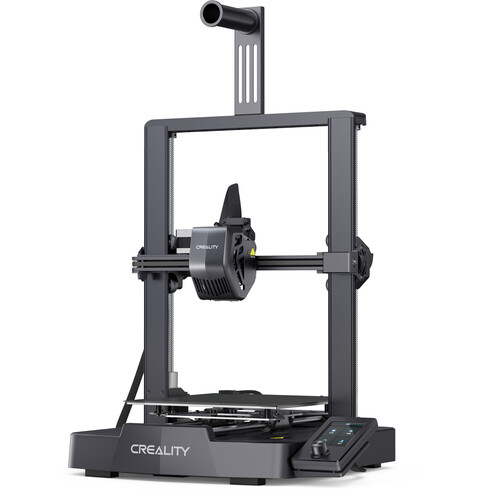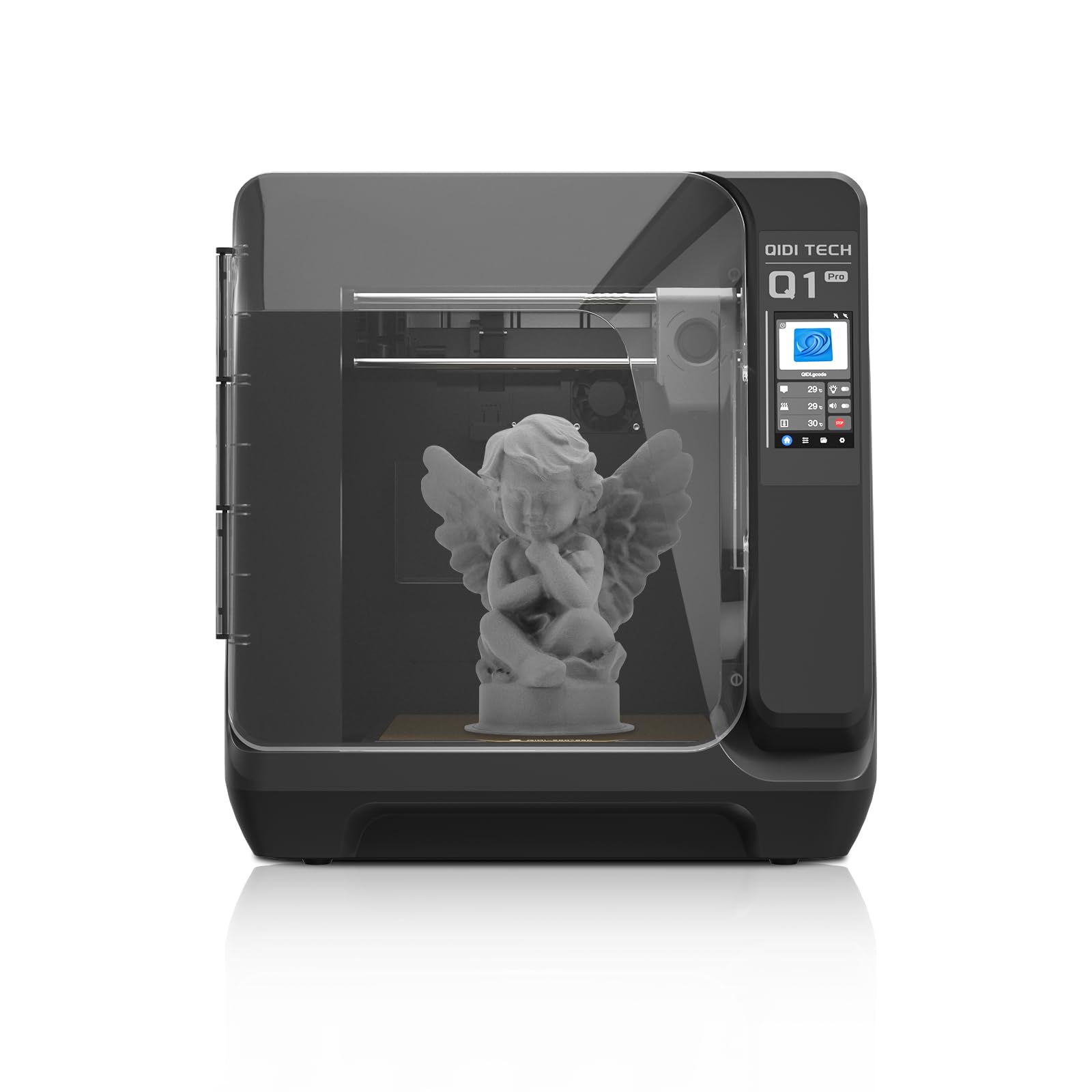Compare Ender 3 V3 SE vs Q1 PRO
Comparison between the best 3D printers
Choose the best 3D printer at the best price. The cheapest 3D printers are here.
Buy a 3D printer here with 3D Fila.
 |
 |
|
| Model | Ender 3 V3 SE[BUY Ender 3 V3 SE] |
Q1 PRO[BUY Q1 PRO] |
| Printing Material | Filament | Filament |
| Buy Filament for Creality Ender 3 V3 SE | Buy Filament forQIDI Q1 PRO | |
| Estimated price | $199,00 | $449,00 |
| Manufacturer | Creality | QIDI |
| Release Year | 2023 | 2024 |
| Print Volume [mm] | 220x220x250 | 245x245x245 |
| Printer Size [mm] | 420x366x490 | 467x477x489 |
| Weight [kg] | 7,34 | 20 |
| Power Loss Recovery | NO | YES |
| Enclosed printer | NO | YES |
| Bed Leveling | Automatic | Automatic |
| Filament End Sensor | NO | YES |
| Bed type | Heated | Heated |
| Power supply system | Direct Drive | Direct Drive |
| Standard nozzle | 0,4 | 0,4 |
| Maximum Nozzle Temperature [°C] | 260 | 350 |
| Maximum Bed Temperature [°C] | 100 | 120 |
| Maximum printing speed [mm/s] | 250 | 600 |
| Filament holder | YES | YES |
| Camera for supervision | NO | NO |
| Recommended filaments | PLA, PETG e TPU (95A+) | PLA、ABS、ASA、PETG、TPU、PC、PA、PA-CF、PET-CF、PAHT-CF etc. |
| Recommended slicers | Creality Print, Cura 5.0 ou superior, Prusa Slicer, Orca | QIDI Slicer/Cura/Simplify 3D/ORCA/PRUSA Slicer |
| Maximum Resolution [mm] | 0,1 | 0,1 |
| Processor | 32-bit Silenciosa | Cortex-A53,64-bit Processor |
| Display | 3,2'' + Knob | Touchscreen 4,3'' |
| Power Supply | 350 W | 350 W |
| Connectivity | SD | WiFi/USB Flash Drive/Ethernet Cable |
| Operating systems | Windows, Linux, Macbook | Windows, Linux, Macbook |
| Date of registration in the system | 2024-03-06 | 2024-07-09 |
| Release date | 2023 | 2024 |
| Extra features | The Ender 3 V3 SE stands out for its easy assembly, excellent automatic bed leveling, direct extrusion and easy interface, ideal for beginners. Although it uses a coated PC board, it offers robust performance, with print speeds of up to 250mm/s, thanks to a solid construction and linear rods on the Y axis. It lacks Wi-Fi, preferring file transfer via SD card. | The QIDI Q1 Pro 3D printer stands out for its Core XY structure and heating chambers that reach up to 60ºC, ideal for advanced materials such as ABS and Nylon. It features Klipper firmware, an automatic leveling system, a high-flow extruder with a double metal nozzle and a hotend that reaches 350ºC. It offers connectivity via Wi-Fi, USB and Ethernet, as well as a 1080p camera for remote monitoring and an intuitive touchscreen for easy operation. |
| Support for multiple colors and materials (AMS and CFS) | NO | NO |
Notes * |
||
| Cost-benefit | 7 / 10 | 8 / 10 |
| Hardware | 0.7 / 10 | 4.8 / 10 |
| Tela | . | . |
| Print volume | 3 / 10 | 3 / 10 |
| Performance | 2 / 10 | 5 / 10 |
| [BUY Ender 3 V3 SE] | [BUY Q1 PRO] |
Conclusion |
| In comparing the Creality Ender 3 V3 SE and the QIDI Q1 Pro, it is clear that each printer targets different user needs and preferences. The Ender 3 V3 SE is positioned as a budget-friendly option, making it an excellent choice for beginners and those who prioritize value. With its straightforward assembly, reliable automatic bed leveling, and robust performance, it excels in delivering good quality prints at a competitive speed. However, it lacks features such as an enclosed build chamber, power loss recovery, and advanced connectivity options, which might limit its use with certain materials and in specific environments. On the other hand, the QIDI Q1 Pro, while more expensive, offers advanced features that cater to experienced users and those looking to work with a wider range of materials. Its Core XY structure allows for rapid printing, and it supports higher maximum temperatures, making it ideal for printing with materials like ABS and Nylon. Additionally, features like built-in Wi-Fi connectivity and advanced monitoring capabilities provide added convenience for users. In conclusion, while the Ender 3 V3 SE delivers a solid cost-benefit ratio for entry-level users, the QIDI Q1 Pro justifies its higher price with enhanced performance and versatility, making it suitable for more advanced applications. Users should weigh their specific needs—whether they prioritize affordability and ease of use or advanced features and material compatibility—before making a decision. |

